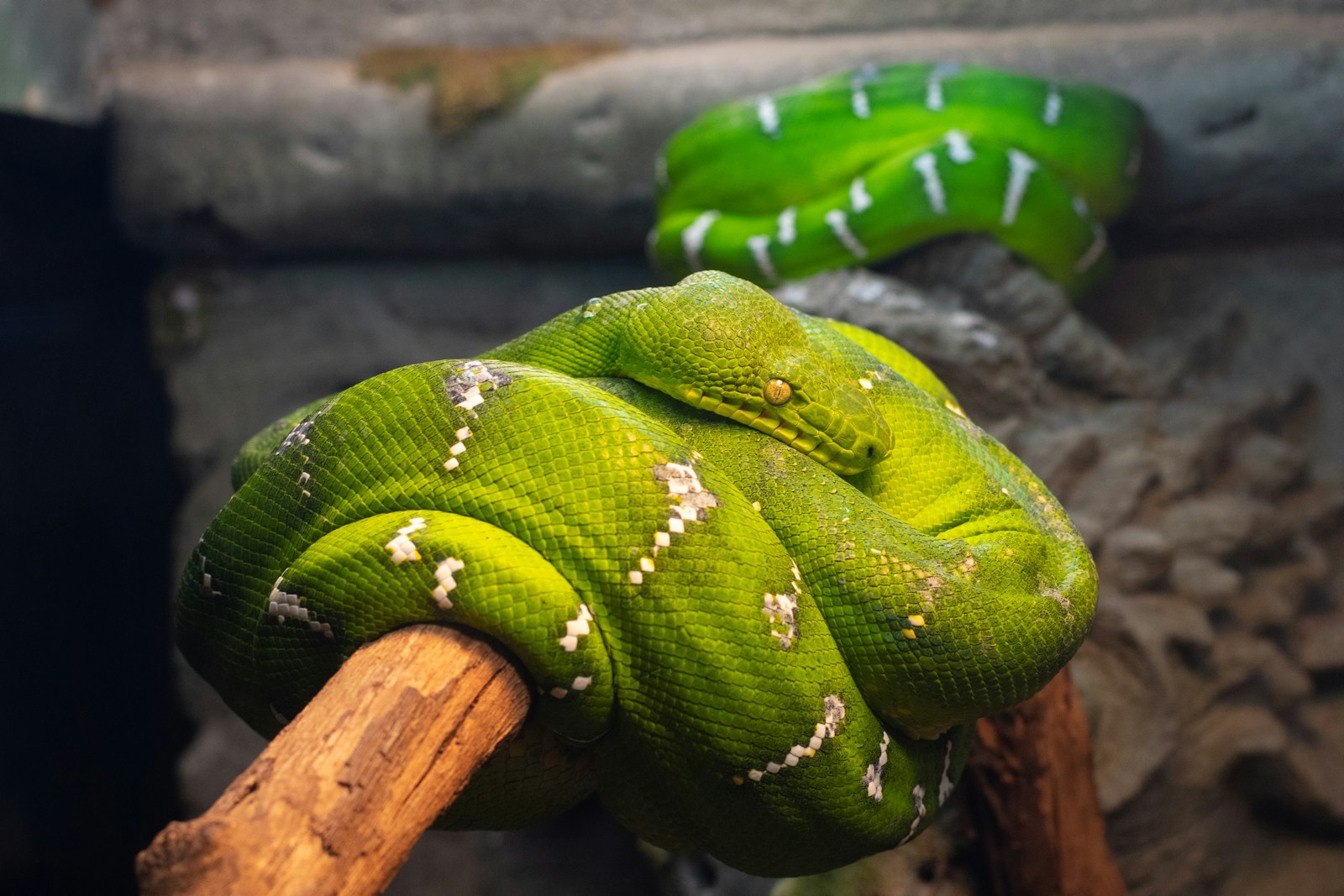In the quest for superior protective gear, military researchers and materials scientists have turned to an unexpected source of inspiration: snake scales. These natural armor systems, perfected over millions of years of evolution, offer remarkable combinations of flexibility, strength, and lightweight protection that modern military armor struggles to achieve. From the deserts of North America to the rainforests of Asia, different snake species have developed specialized scale structures that allow them to navigate their environments while remaining protected from predators and environmental hazards. This biological engineering marvel has caught the attention of defense researchers seeking to develop the next generation of body armor and vehicle protection systems. By studying how snake scales function, scientists hope to create innovative protective technologies that could save lives on the battlefield and revolutionize personal safety equipment for military personnel.
The Evolutionary Marvel of Snake Scales

Snake scales represent one of nature’s most successful adaptations, evolving over 100 million years to provide these limbless reptiles with both protection and mobility. Unlike the scales of fish or the feathers of birds, snake scales are actually modified skin cells arranged in overlapping patterns that create a seamless protective layer. Each scale is composed primarily of keratin—the same protein found in human fingernails and hair—but arranged in complex microstructures that enhance durability while maintaining flexibility. This evolutionary design allows snakes to move through rough terrain, resist abrasion, and withstand punctures or bites from predators. Most impressively, snake scales accomplish this protection without sacrificing the animal’s legendary flexibility or adding excessive weight, a balance that modern armor designers continually struggle to achieve in their protective systems.
Biomimicry: Nature’s Solutions to Human Problems

Biomimicry—the practice of emulating nature’s time-tested patterns and strategies—forms the foundation of this snake-inspired armor research. Scientists recognize that nature has already solved many of the engineering challenges we face today through millions of years of evolutionary trial and error. By studying natural systems like snake scales, researchers can bypass centuries of material development and leverage solutions that have already proven effective in biological contexts. This approach has previously yielded breakthroughs like Velcro (inspired by burrs), more efficient wind turbines (modeled after humpback whale fins), and water-repellent surfaces (mimicking lotus leaves). The study of snake scales represents one of the most promising frontiers in biomimetic research, with potential applications extending beyond military use into sports protection, industrial safety equipment, and even architectural design for flexible yet durable structures.
Remarkable Mechanical Properties of Snake Scales

The mechanical properties of snake scales make them particularly valuable models for armor design. Research has revealed that snake scales exhibit impressive impact resistance despite their relatively thin structure, often deflecting forces that would puncture many synthetic materials of similar thickness. This strength comes from their layered microstructure, where different density tissues work together to absorb and distribute force. Additionally, scales demonstrate remarkable flexibility in certain directions while remaining rigid in others—a property known as anisotropic flexibility—allowing snakes to bend their bodies without compromising protection. Perhaps most importantly for military applications, snake scales achieve this protection-to-weight ratio through clever structural design rather than dense, heavy materials. Studies using electron microscopy have further revealed that some snake species have evolved nanoscale structures within their scales that enhance both strength and flexibility, providing inspiration for advanced material engineering.
The Python’s Protective Innovation

Among the snake species studied, pythons have garnered particular attention for their remarkable scale properties. These massive constrictors possess scales with interlocking microstructures that provide exceptional protection against scratches and punctures while allowing the snake to compress and expand during breathing and digestion. Researchers at the Massachusetts Institute of Technology have documented how python scales feature a complex arrangement of overlapping elements that create a natural scale mail, providing multidirectional protection. When a python’s body is struck, these scales work together, distributing force across a wider area rather than allowing it to concentrate at the impact point. This system proves remarkably effective against both piercing attacks from predators’ teeth and abrasive damage from rough terrain. The python’s scale design is especially relevant for military applications where armor must protect against multiple threat types while allowing the wearer to maintain mobility and comfort during extended operations.
Sidewinder Rattlesnakes: Desert Specialists with Armor Innovations

Sidewinder rattlesnakes, adapted to the harsh desert environment, have evolved specialized scales that offer insights for military armor designed for extreme conditions. These snakes possess keeled scales—featuring a raised ridge down the center—that not only provide protection but also help them move efficiently across loose sand through their distinctive sidewinding locomotion. The microstructure of these scales includes specialized layers that resist abrasion from sand particles while reflecting solar radiation to manage body temperature in extreme heat. Military researchers have taken particular interest in how these scales maintain their protective properties despite constant friction with abrasive sand particles, a challenge similar to what military gear faces in desert deployments. Additionally, the heat management properties of sidewinder scales could inform the development of armor systems that help regulate body temperature for soldiers operating in extreme environments, addressing a significant factor in combat effectiveness and preventing heat-related injuries.
The King Cobra’s Flexible Armor System

The king cobra, one of the world’s most dangerous and impressive snakes, possesses a scale system that offers unique insights for military armor development. These scales demonstrate exceptional tensile strength while maintaining the remarkable flexibility needed for the cobra’s lightning-fast strike movements. When threatened, the king cobra can raise the front third of its body off the ground, requiring scales that can protect vital organs while handling the physical stress of this unusual posture. Engineers studying king cobra scales have discovered a complex interlocking system that allows the scales to shift relative to each other during movement while maintaining complete protective coverage. This natural design has inspired prototypes for segmented armor that can flex and move with a soldier’s body while maintaining protection over vital areas. The neck scales of the king cobra are particularly interesting to researchers, as they must protect vulnerable areas while allowing for the extreme flexibility required during the snake’s defensive displays.
Materials Science Breakthroughs Inspired by Snake Scales

The study of snake scales has catalyzed significant advancements in materials science, particularly in the development of composite materials that mimic the mechanical properties of biological structures. Research teams have created synthetic materials with layered microstructures similar to those found in snake scales, resulting in thin, lightweight materials with surprisingly high impact resistance. One breakthrough approach involves embedding high-strength fibers within flexible polymer matrices in patterns inspired by the overlapping arrangement of snake scales. Another innovation focuses on creating materials with directional flexibility similar to snake skin, allowing for movement in certain planes while maintaining rigidity in others. Researchers at several universities have also developed 3D-printable materials with internal structures modeled after the microarchitecture of specific snake species’ scales, potentially allowing for customized armor solutions tailored to different body regions or threat profiles.
Scale-Inspired Body Armor Design

Military body armor designers have begun implementing snake-scale principles in next-generation protective systems. Traditional body armor typically relies on rigid ceramic or metal plates that, while effective against ballistic threats, significantly restrict movement and cause user fatigue during extended wear. Snake-inspired designs instead utilize overlapping segments of protective material that maintain coverage while allowing for natural body movement, similar to how snake scales permit flexibility without exposing vulnerable areas. Prototype systems have employed articulated plates connected by flexible materials that mimic the hierarchical structure of snake skin, creating armor that moves with the wearer rather than against them. This approach not only improves mobility but also potentially enhances protection by allowing the armor to better conform to the body, eliminating dangerous gaps while distributing impact forces more effectively across the entire system rather than concentrating them at a single point.
Advanced Manufacturing Techniques for Scale-Inspired Armor

Bringing snake-scale principles to practical military applications requires innovative manufacturing approaches that can replicate complex biological structures at scale. Additive manufacturing (3D printing) has emerged as a key technology in this field, allowing engineers to create intricate, biomimetic structures that would be impossible to produce using traditional manufacturing methods. Multi-material 3D printing has proven particularly valuable, enabling the creation of composite structures with varying properties throughout a single component—hard protective elements seamlessly integrated with flexible connective materials, mirroring the transition zones found in snake scales. Another promising approach involves microstructural control of conventional materials through precisely controlled processing techniques, creating ceramics or metals with internal architectures inspired by the layered structure of snake scales. These advanced manufacturing techniques not only allow for more effective armor designs but also potentially reduce production costs and enable rapid customization to meet specific mission requirements or accommodate individual soldier body types.
Testing and Validation of Snake-Inspired Protection

Rigorous testing protocols have been developed to evaluate how effectively snake-inspired armor designs protect against real-world threats. Military research laboratories employ sophisticated impact testing equipment that can measure how these biomimetic materials respond to everything from ballistic impacts to blast pressure waves and stabbing attempts. High-speed cameras capturing thousands of frames per second allow researchers to visualize exactly how snake-inspired armor deforms and recovers during impact events, providing crucial feedback for design refinements. Computer simulations using finite element analysis complement physical testing by allowing engineers to model how subtle changes in scale-inspired microstructures might affect performance without manufacturing numerous prototypes. Field testing with military units has provided additional insights into how these armor systems perform under actual operational conditions, addressing practical concerns like heat management, moisture control, and long-term durability that laboratory tests might miss.
Beyond Protection: Multifunctional Aspects of Snake-Inspired Armor

Modern military equipment must serve multiple functions beyond basic protection, an area where snake scale research offers significant advantages. Snake scales naturally serve numerous purposes beyond defense—they help regulate temperature, reduce friction during movement, resist water loss, and even contribute to camouflage through specialized coloration or reflective properties. Researchers are incorporating these multifunctional aspects into military armor designs, creating protective systems that do more than just stop projectiles. Prototype snake-inspired armor systems include integrated thermal management layers that help regulate body temperature, reducing heat stress in hot environments and potentially eliminating the need for separate cooling garments. Other designs incorporate friction-reducing surface treatments based on snake ventral scales, reducing energy expenditure during movement and preventing chafing during extended operations. Some advanced concepts even explore incorporating flexible solar cells or piezoelectric elements into scale-inspired armor, potentially allowing soldiers to generate power for electronic equipment directly from their protective gear.
Challenges in Translating Biological Systems to Military Applications

Despite promising advances, researchers face significant challenges in adapting snake scale principles to military armor. One fundamental issue involves scale—snake scales are optimized to protect animals weighing a few pounds to a few hundred pounds against natural threats, while military armor must protect humans against high-velocity projectiles and explosive forces far exceeding anything in nature. Material limitations present another hurdle, as the biological materials composing snake scales (primarily keratin) lack the absolute strength needed for military applications, requiring engineers to replicate structural principles using stronger synthetic materials while maintaining the beneficial mechanical properties. Manufacturing complexity also presents challenges, as mass-producing items with the intricate microstructures found in snake scales requires advanced techniques that may be prohibitively expensive for large-scale military procurement. Additionally, military armor must meet strict standardization and certification requirements that may be difficult to satisfy with novel biomimetic designs that behave differently from conventional protective systems during standardized testing procedures.
Future Directions: The Evolution of Snake-Inspired Protection

The future of snake-inspired military armor appears exceptionally promising as advances in materials science and manufacturing technology continue to accelerate. Research is increasingly focusing on creating “smart” armor systems that can actively respond to threats by changing properties—stiffening upon impact then returning to a flexible state, similar to how certain snake species can tense their scales when threatened. Nanotechnology offers another frontier, with some research teams developing carbon nanotube structures arranged in patterns mimicking the microstructure of snake scales, potentially creating materials stronger than steel but flexible enough for comfortable wear. Hybrid approaches combining traditional ballistic materials with snake-inspired design principles may offer the most immediate practical applications, leveraging established protection technologies while enhancing mobility and comfort through biomimetic structural arrangements. As computational modeling capabilities advance, researchers can increasingly simulate how different biological structures might respond to military threats without building physical prototypes, potentially accelerating development timelines for next-generation protective systems based on snake scale principles.
From the ancient battlefields where soldiers wore scaled armor inspired by observations of nature to today’s high-tech research laboratories studying the nanostructure of python scales, the connection between snake anatomy and human protection spans millennia. Modern military research has transformed this ancient inspiration into sophisticated science, potentially revolutionizing how we protect those who serve in harm’s way. As our understanding of these remarkable biological systems deepens and our manufacturing capabilities advance, the protective principles perfected by snakes over millions of years of evolution may soon shield soldiers on twenty-first century battlefields, demonstrating once again that some of our most innovative solutions come from carefully studying the natural world around us.





